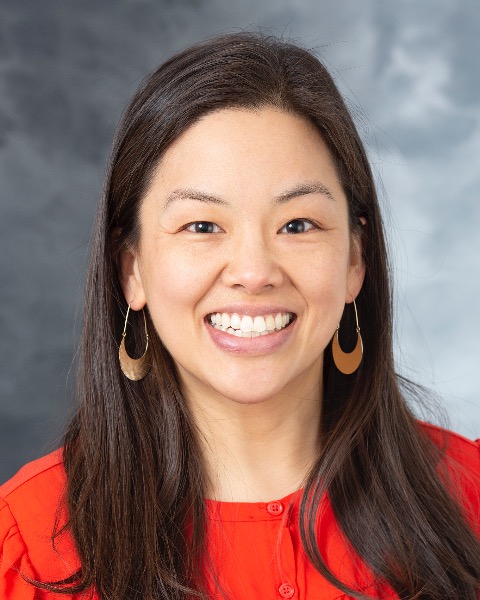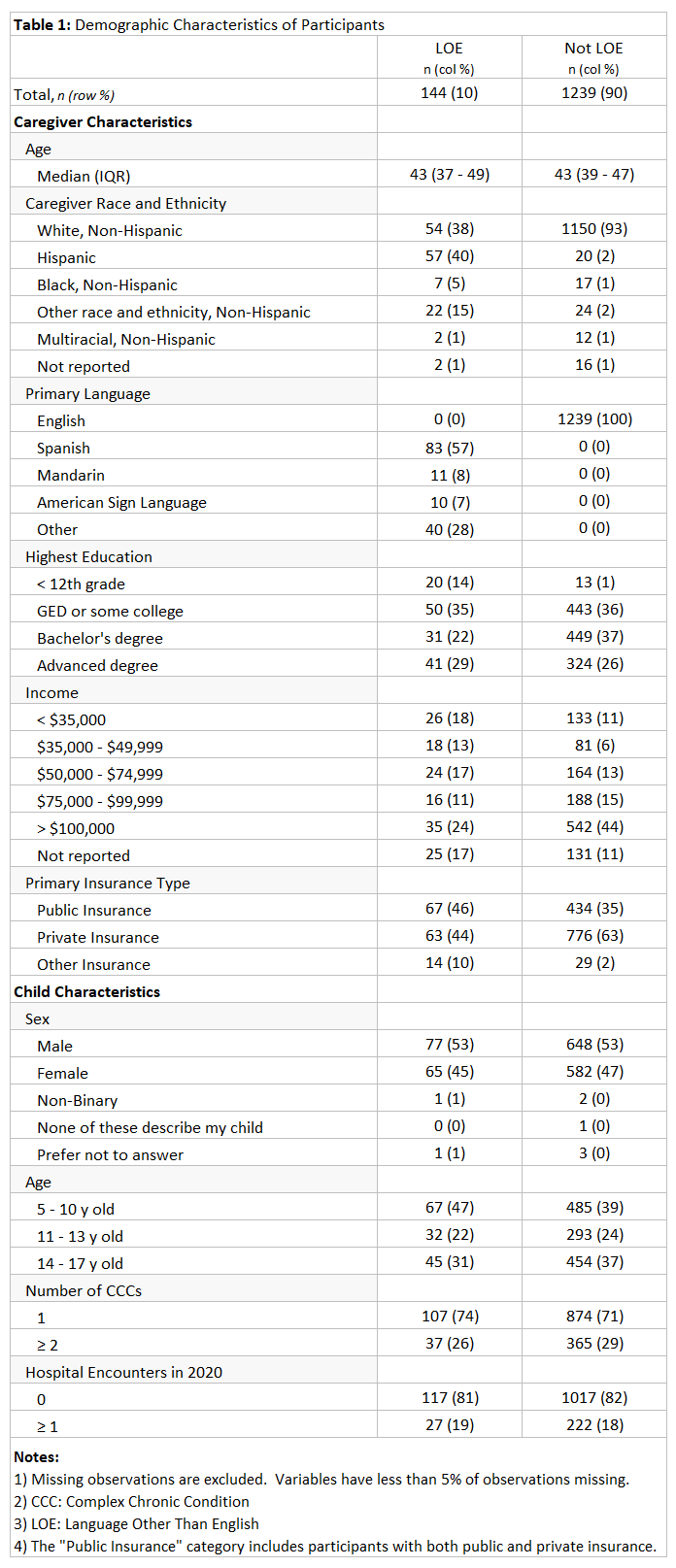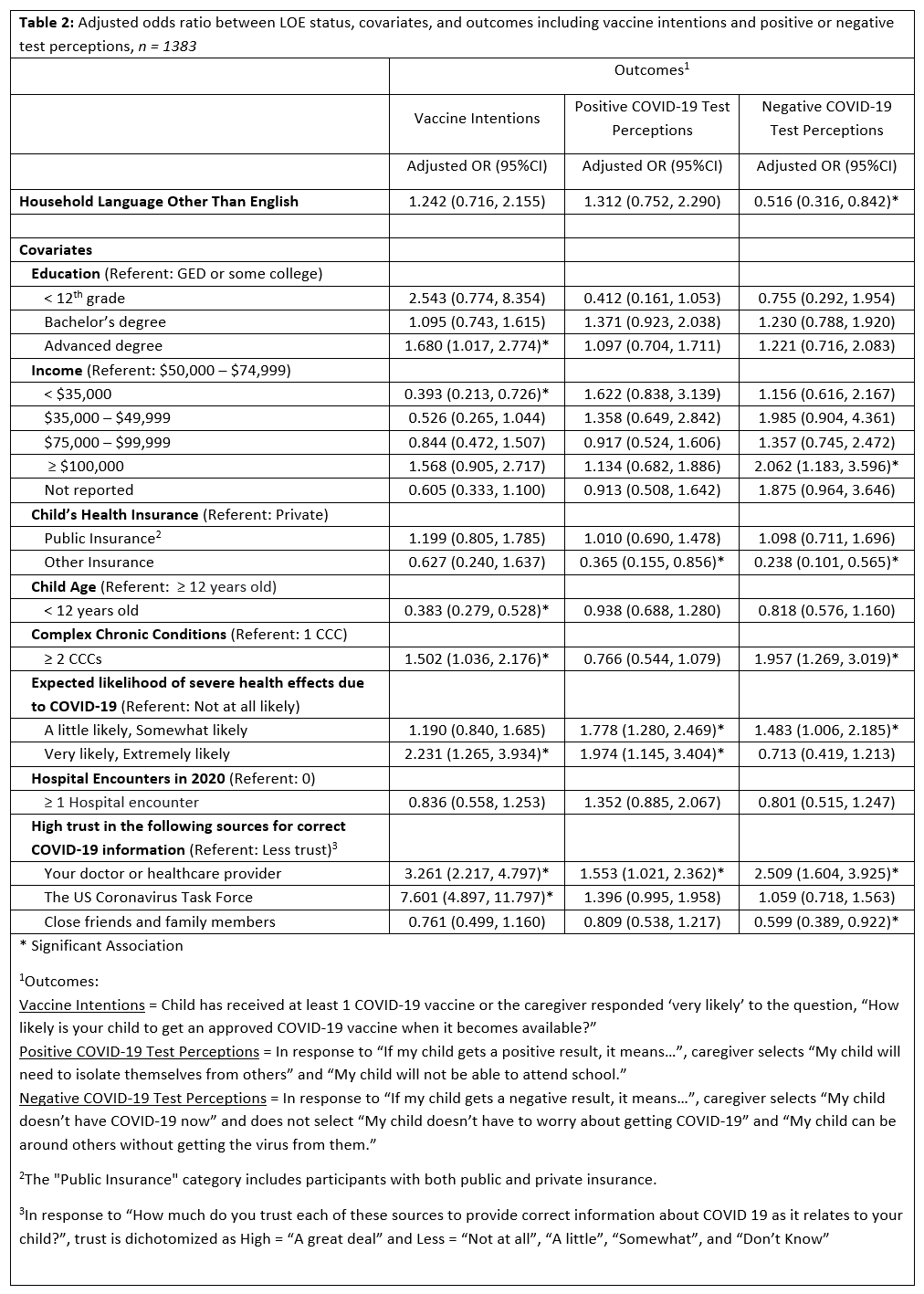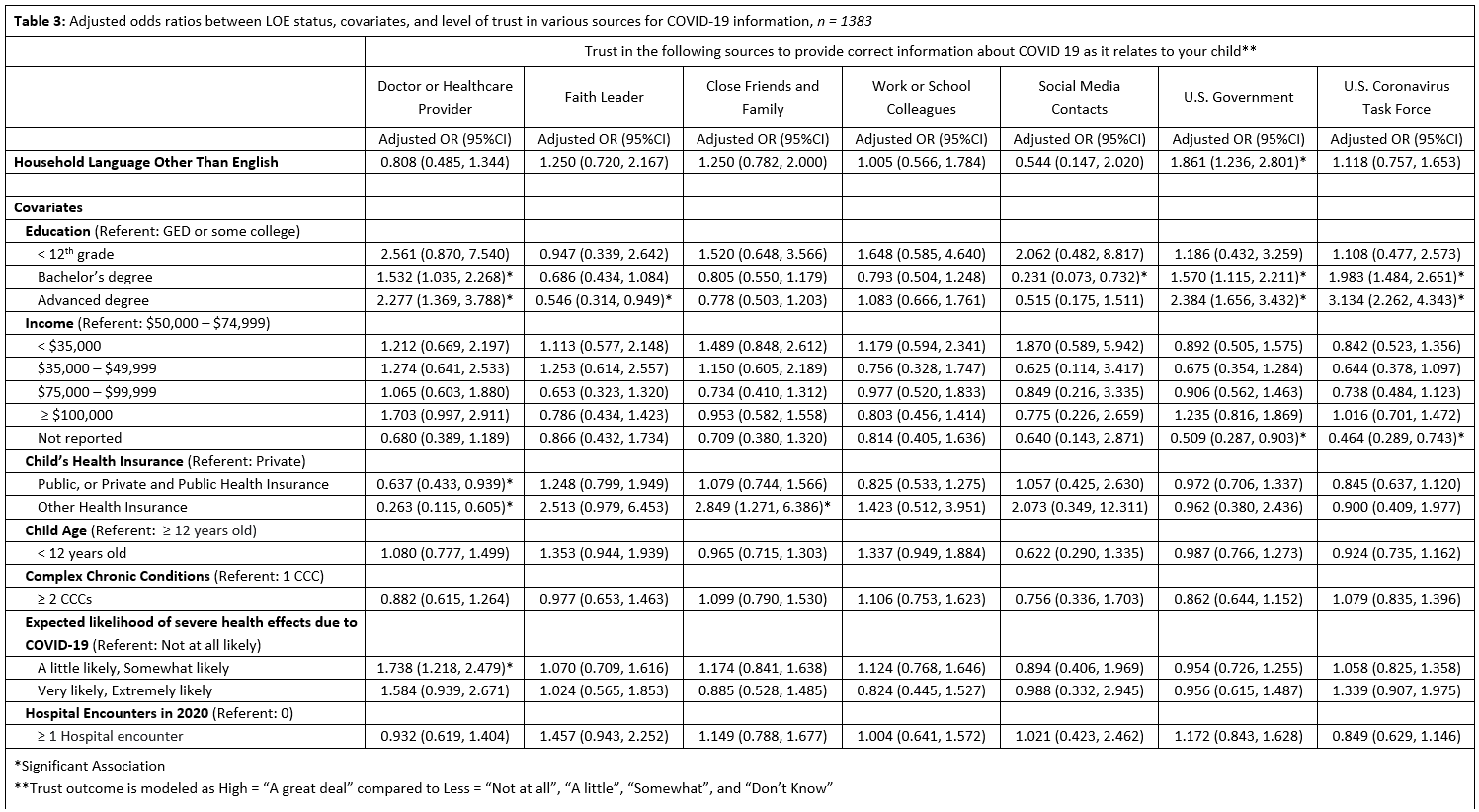Children with Chronic Conditions
Children with Chronic Conditions 3
80 - Disparities in COVID-19 Perceptions by Household Primary Language for Children with Medical Complexity
Publication Number: 80.305

Laura P. Chen, MD (she/her/hers)
Pediatric Hospitalist
University of Wisconsin School of Medicine and Public Health
Madison, Wisconsin, United States
Presenting Author(s)
Background:
Children with medical complexity (CMC) are 8 times more likely to be hospitalized with COVID-19. Significant disparities in COVID-19 outcomes exist, including among those living in a household with primary language other than English (LOE).
Objective:
To investigate the association between CMC household primary language and caregiver COVID-19 vaccine intentions, testing knowledge, and trusted sources of information.
Design/Methods:
This cross-sectional survey of caregivers of CMC age 5 to 17 years was conducted in the Midwestern United States from April to June 2022. CMC had at least 1 complex chronic condition. Surveys were available in English and Spanish, and households were defined as having LOE if they reported speaking a language other than English at home. Multivariable logistic regression examined associations between LOE and COVID-19 vaccine intentions (having received ≥1 COVID-19 vaccine or “very likely” to vaccinate their child), interpretation of positive/negative COVID-19 test results, and trusted sources of information.
Results:
We received 1,383 CMC caregiver responses (49% response rate), of which 144 (10.4%) had household LOE (31 other languages, 57% of LOE were Spanish) (Table 1). There was no significant association between household LOE and COVID-19 vaccine intentions (Table 2). Compared to non-LOE households, households with LOE had significantly different interpretations of COVID-19 test results. Odds of interpreting a negative test as meaning the child does not have COVID-19 now, can still worry about getting COVID-19, and can still get the virus from others, was lower in households with LOE than non-LOE (aOR [95% CI]: 0.52 [0.32-0.84]). Households with LOE were more likely to trust the US government to provide COVID-19 information than non-LOE (aOR [95% CI]: 1.86 [1.23-2.8]). There were no significant associations between LOE caregiver status and trust in healthcare provider, faith leader, or social media contacts (Table 3).
Conclusion(s):
Differences in COVID-19 pandemic perceptions exist based on household language for CMC. In medically vulnerable, diverse populations, these differences in key pandemic perceptions may influence disparities in outcomes. Well-designed public health messaging effective for all populations is essential.



